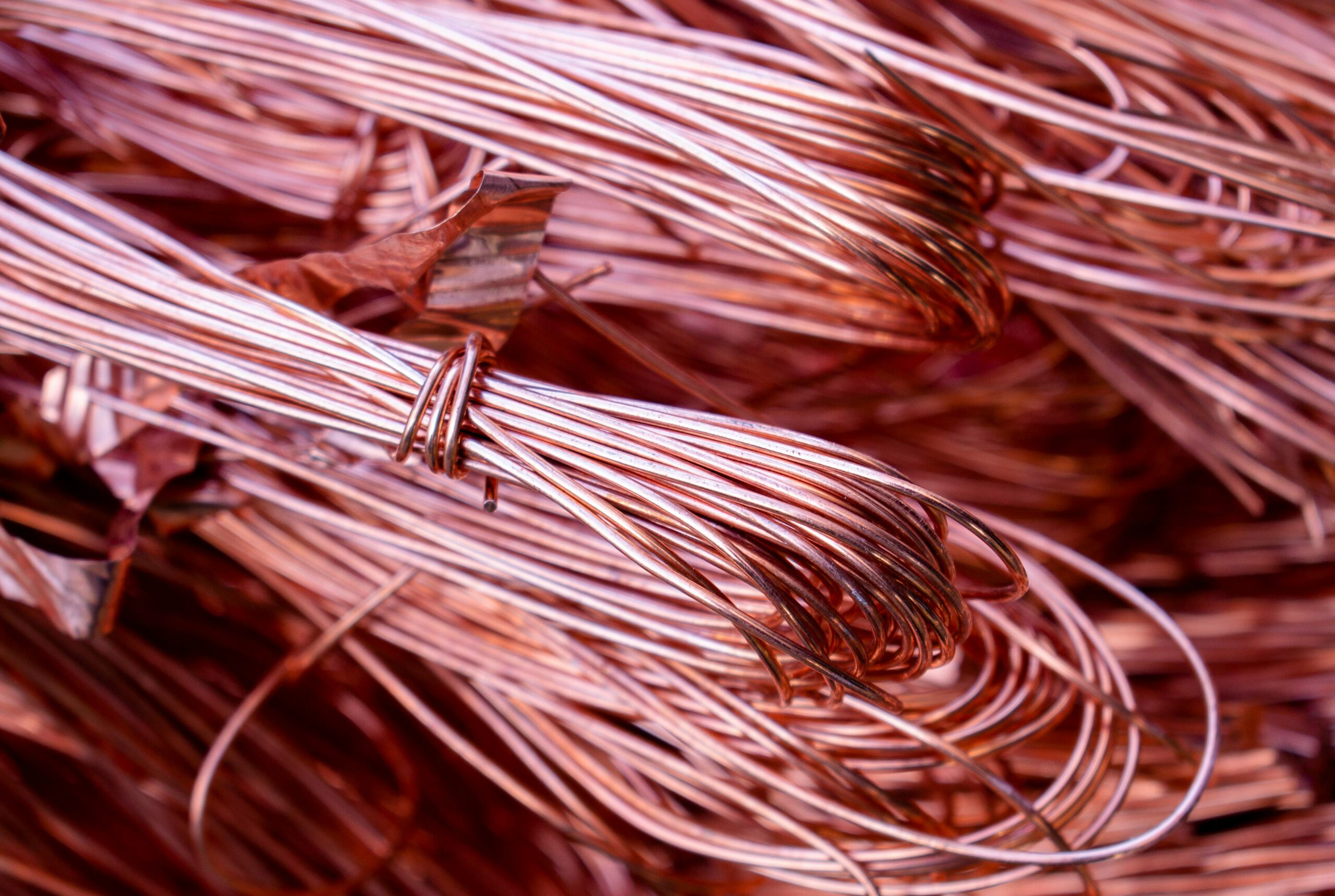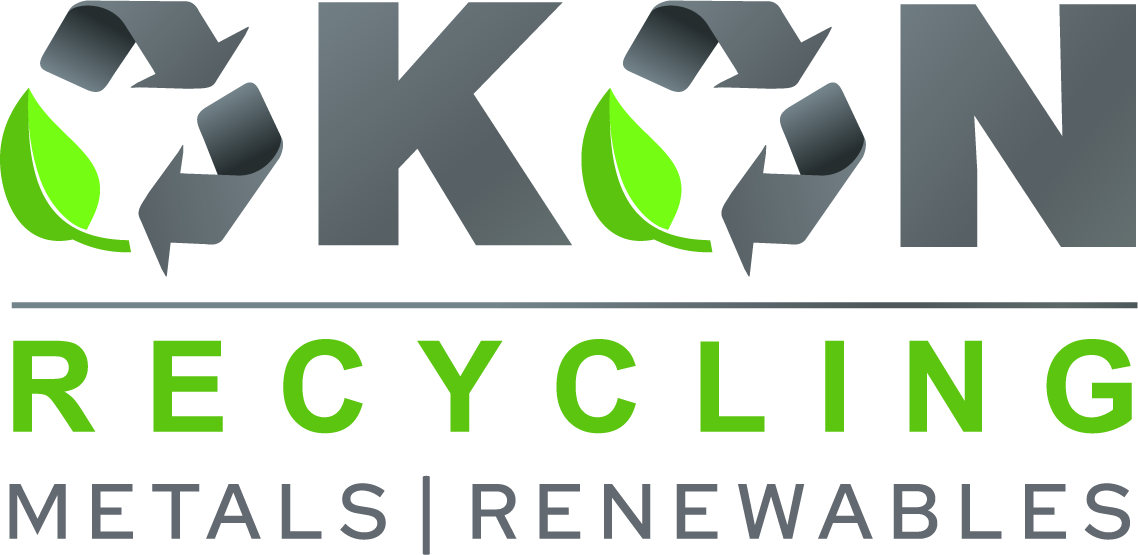5901 Botham Jean Blvd, Dallas, TX 75215
Copper Wire Stripping for Profit: Turn Scrap into Cash
February 13, 2025Did you know that copper prices have soared over 40% in the past year alone? This significant increase has sparked a rush for copper wire, which is hiding in plain sight around us. Welcome to the lucrative world of copper wire stripping, where discarded cables and wires transform into cash.
With global demand for copper outpacing supply, savvy entrepreneurs are discovering an untapped resource in scrap yards, construction sites, and even their own garages. Copper wire stripping has emerged as a profitable recycling venture for those willing to learn the craft. But this isn’t just about making a quick profit. It’s about contributing to a crucial sustainability effort that reshapes our approach to waste and resource management.
As we explore the art and science of copper wire stripping, we’ll uncover the tools, techniques, and insider knowledge that separate amateurs from professionals. We’ll see how companies like Okon Recycling are transforming the industry, turning what was once considered trash into valuable commodities.
So grab your wire strippers and put on your safety goggles—we’re about to embark on a journey through the gritty, fascinating, and potentially lucrative world of copper wire stripping.
Top Methods for Efficient Copper Wire Stripping

In recycling and electrical work, efficiently stripping copper wire can significantly boost productivity and profitability. Let’s examine the top methods for copper wire stripping, each with its own advantages and challenges.
Manual Stripping Tools: The Traditional Approach
Manual wire strippers are a popular choice for professionals and DIY enthusiasts. These tools offer simplicity and affordability, making them ideal for small-scale projects or on-the-go work.
To use manual strippers effectively, select the appropriate notch for your wire gauge. Insert the wire, apply pressure, and pull to remove the insulation. While this method requires some skill, it provides precise control over the stripping process.
Benefits of manual stripping tools include their low cost, portability, and versatility. Many manual strippers also function as multi-tools, featuring additional options like wire cutting and crimping. However, they can be time-consuming for large projects and may lead to inconsistent results or wire damage if not used properly.
Electric Wire Strippers: Balancing Speed and Precision
Electric wire strippers offer a significant upgrade in speed and consistency. These tools automate much of the stripping process, reducing physical effort and minimizing the risk of wire damage.
Using an electric stripper involves feeding the wire into the machine, which then automatically measures, cuts, and strips the insulation. This process is faster and more precise than manual methods, especially for repetitive tasks.
Advantages of electric strippers include increased productivity, reduced operator fatigue, and more consistent results. However, they have a higher upfront cost and may require some training to use effectively. Additionally, they may not be as portable as manual tools, which could limit their use in certain field applications.
Advanced Wire Stripping Machines: Industrial-Scale Efficiency
For large-scale operations or industrial settings, advanced wire stripping machines offer unparalleled efficiency. These machines can handle high volumes of wire, often processing multiple wires simultaneously and accommodating a wide range of wire types and sizes.
Advanced stripping machines often feature programmable settings, allowing for precise control over stripping length and depth. Some models even incorporate sensors and AI technology to optimize the stripping process automatically.
The benefits of these machines include extremely high throughput, consistent quality, and the ability to handle complex wire configurations. However, they represent a significant investment and may require specialized training to operate and maintain. Their use is typically limited to large-scale recycling operations or manufacturing facilities.
Choosing the Right Method for Your Needs
Selecting the most efficient copper wire stripping method depends on several factors, including the volume of wire you’re processing, the types of wire you commonly work with, and your budget. Here’s a quick comparison to help guide your decision:
- Manual Tools: Best for small projects, occasional use, or tight budgets.
- Electric Strippers: Ideal for regular use, medium-scale projects, or when consistency is key.
- Advanced Machines: Necessary for high-volume operations or industrial-scale recycling.
| Method | Best For | Pros | Cons |
|---|---|---|---|
| Manual Tools | Small projects, occasional use, tight budgets | Low cost, portable, versatile | Time-consuming for large projects, inconsistent results |
| Electric Strippers | Regular use, medium-scale projects, consistency | Increased productivity, reduced fatigue, consistent results | Higher upfront cost, requires training |
| Advanced Machines | High-volume operations, industrial-scale recycling | High throughput, consistent quality, handles complex configurations | Significant investment, requires specialized training |
Remember, efficiency isn’t just about speed. Consider factors like precision, safety, and long-term cost-effectiveness when making your choice. Investing in the right tool can significantly impact your overall productivity and profitability in copper wire stripping operations.
Whether you’re a hobbyist, professional electrician, or running a large-scale recycling operation, understanding these methods will help you maximize your efficiency and ensure the best results in your copper wire stripping endeavors. Always prioritize safety and follow proper guidelines when working with electrical components and recycling materials.
Choosing the Right Equipment for Copper Wire Stripping

In copper recycling, selecting the right wire stripping equipment is crucial for your operation’s efficiency and profitability. Whether you’re a seasoned recycler or just starting, understanding the key factors that influence this decision is essential.
Wire thickness, processing volume, and budget constraints are pivotal in determining the ideal machine for your needs. Let’s explore these factors and how they impact your equipment selection process.
Wire Thickness: A Critical Consideration
The gauge of wire you typically process should be your first consideration when choosing a stripping machine. Different models are designed to handle specific wire sizes, from thin 26 AWG wires to thick 0 AWG cables.
For those dealing with various wire sizes, a versatile machine like the BWS-38-MF-DA might be ideal. It can handle wires from 18 AWG to 1″ in diameter, offering flexibility for diverse recycling operations.
Using a machine not suited for your wire gauge can result in damaged copper cores or inefficient stripping, both of which cut into your profits.
Processing Volume: Matching Machine to Workload
Your daily or weekly wire processing volume is another crucial factor in equipment selection. Manual or semi-automatic machines might suffice for small-scale operations or occasional use. However, for high-volume recycling, an automatic wire stripper is often the best choice.
Automatic strippers, while more expensive upfront, can dramatically increase your throughput. Some models can process hundreds of feet of wire per minute, significantly boosting your operation’s efficiency.
Consider future growth as well. Investing in a machine with higher capacity than your current needs might pay off if you anticipate increased volume down the line.
Budget Considerations: Balancing Cost and Quality
While opting for the cheapest option is tempting, remember that in wire stripping, you often get what you pay for. High-quality machines, though more expensive initially, can offer better copper recovery rates, faster processing speeds, and longer operational lifespans.
Consider the total cost of ownership, including maintenance and potential downtime. A more reliable machine might cost more upfront but save money in the long run through reduced repairs and higher efficiency.
For those on a tight budget, consider refurbished equipment or machines with modular designs that allow for upgrades as your business grows.
Additional Features to Consider
Beyond the core factors, several additional features can enhance your wire stripping operation:
- Safety features: Look for machines with emergency stop buttons and protective guards to ensure operator safety.
- Ease of use: User-friendly controls and easy maintenance can save time and reduce training needs.
- Versatility: Some machines can handle multiple wire types, including coaxial and flat cables, offering more flexibility in your recycling operations.
- Energy efficiency: Modern, energy-efficient models can help reduce operating costs over time.
- Noise levels: Lower noise output can create a more comfortable work environment, especially important for indoor operations.
Choosing the right copper wire stripping equipment is a balancing act between your specific needs, budget, and long-term goals. By carefully considering wire thickness, processing volume, and budget alongside additional features, you can select a machine that not only meets your current requirements but also supports your future growth in the copper recycling industry.
The right equipment investment can significantly boost your operation’s efficiency, leading to higher copper recovery rates and, ultimately, a more profitable recycling business.
Safety Precautions When Stripping Copper Wire

The Importance of Safety in Copper Wire Handling
Stripping copper wire may seem straightforward, but it requires careful attention to safety. The process involves sharp tools and potentially hazardous materials, making proper precautions essential.
One mistake could lead to serious injuries or accidents. That’s why it’s crucial to approach this task with a safety-first mindset, whether you’re a professional electrician or a DIY enthusiast.
Consider key safety measures to prevent accidents and ensure a smooth wire stripping process.
Essential Protective Gear for Copper Wire Stripping
When handling copper wire, your first line of defense is proper protective equipment. This gear acts as a barrier between you and potential hazards, significantly reducing the risk of injury.
Start with a pair of safety goggles. These shield your eyes from flying debris during the stripping process. Even a tiny piece of wire or insulation can cause serious eye damage.
Next, invest in cut-resistant gloves. These specialized gloves protect your hands from sharp wire ends and cutting tools, preventing painful cuts and punctures.
Proper Tool Handling and Maintenance
The tools you use for stripping copper wire can be as dangerous as the wire itself if not handled correctly. Always use the right tool for the job—a dedicated wire stripper is often safer and more effective than a utility knife.
Keep your tools sharp and in good condition. Dull or damaged tools can slip, increasing the risk of injury. Regularly inspect your equipment for signs of wear and replace them when necessary.
When using wire strippers, grip them firmly and keep your fingers away from the cutting edges. A moment of carelessness can result in a nasty cut.
Environmental Considerations and Workspace Setup
Your work environment plays a crucial role in safety. Ensure your workspace is well-lit to avoid eye strain and reduce the likelihood of accidents due to poor visibility.
Keep your area clean and organized. A cluttered workspace increases the risk of tripping or accidentally knocking over tools. Have a designated spot for your tools and materials, and clean up as you go.
Proper ventilation is also important, especially if you’re dealing with large quantities of wire. Some insulation materials can release harmful fumes when stripped, so work in a well-ventilated area or use a fan to improve air circulation.
Electrical Safety: A Critical Consideration
Perhaps the most crucial safety aspect when dealing with copper wire is electrical safety. Always assume a wire is live until you’ve confirmed otherwise. Use a voltage tester to check for any electrical current before you begin stripping.
If you’re working with wires that are part of an existing electrical system, turn off the power at the main breaker. This simple step can prevent potentially fatal electric shocks.
Remember, water and electricity don’t mix. Keep your work area dry and never handle wires with wet hands or in damp conditions.
- Always use insulated tools when working with electrical wires
- Never work on live circuits unless you’re a trained professional
- If you’re unsure about anything, consult a licensed electrician
| Type of PPE | Uses |
| Gloves | Prevents injury from hot materials or sharp objects |
| Safety Shoes | Protects against falls |
| Protective Headgear | Used in industries with chemical, heat, or noise hazards |
| Dust Resistant Clothes | Offers protection against dust and airborne particles |
| Safety Glasses | Prevents injury from flying objects, particles, liquids, and sparks |
| Respiratory Protective Equipment | Protects against respiratory hazards |
Conclusion: The Profitable Future of Copper Wire Stripping
Copper wire stripping is a profitable and rapidly evolving industry, fueled by technological advancements and sustainability efforts. Companies like Okon Recycling are proving that profitability and eco-friendly practices can coexist.
With the global recycled copper market projected to reach $91.23 billion by 2031, the industry’s growth potential is undeniable. Innovations like automated wire stripping and efficient sorting methods enhance productivity while reducing waste, aligning with circular economy principles.
Success in this field requires staying ahead of trends, investing in sustainable practices, and improving efficiency. The future of copper recycling isn’t just about waste management—it’s about creating value, driving economic growth, and protecting the planet.
Ready to seize the opportunity? Contact Okon Recycling at 214-426-6566 to learn more about sustainable recycling practices and industry opportunities.
